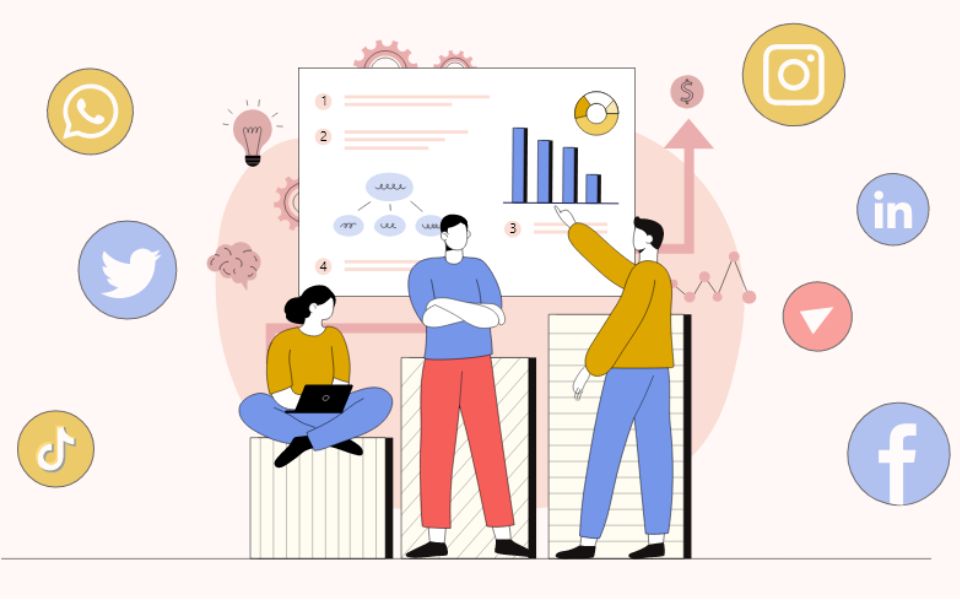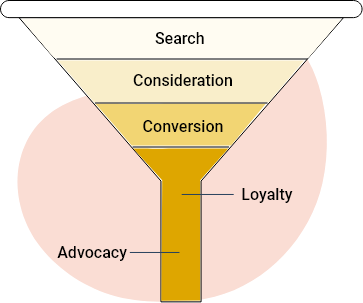Subscribe to Our Newsletter
Stay updated with the latest tips and strategies. Get additional discounts and alerts on offers.

In this article, we will explore how social media influences B2B purchase decisions. We have also listed down some of the well-known B2B brands which have the best social media presence, along with a downloadable checklist to ace your social media presence/influence game.


While some of these factors are specific to products or the service to be purchased, others reflect the choices made by an individual company or brand. Since no two purchase decisions are made in the same light and with the same intention, it is difficult to predict how these factors will ultimately shape the final decision.
For marketers, understanding these influential factors will provide a complete view into the mind of the ideal customer. You can use these aspects to connect with your perfect audience and impress them to make a profitable decision.
Hi there, thank you for being here. We would appreciate
it if you take a second to fill this out.
Matthew Goulart, the founder of Ignite Digital, a Canadian digital marketing agency, says that “Social media is about the people! Not about your business. Provide for the people, and the people will provide you.”
B2B purchasing behavior is increasingly imitating the B2C cycle owing to factors like the omnipresence of digital resources, mobile devices, and the presence of ‘social buyers.’
Social media platforms like Facebook, Instagram, and LinkedIn are progressively helping businesses share company information and insights with their followers. These platforms act as a smooth communication channel between the prospects/customers and the brand. By giving the audience a glimpse of the company’s work culture, ethics, and many more, social media paints a natural face of the brands, hence assisting them in making a more morally sound purchase decision.
These are how social media influences the buyers in the B2B industry to make an informed purchase decision.
The modern-day buyer is targeted with ads and commercials across all the social media platforms. Based on their browser cookies and search history, your prospective buyer is fed with content from many of your competitors. These commercials can play a vital role in the final buying decision made.
Online reviews are the most influential factor while making a purchase, if not THE most important one. 92% of buyers hesitate to purchase if there are no customer reviews. The response you make to reviews, feedback, complaints, and inquiries depict your customer behavior and how important are they for you.
The adoption of social media to promote informative, interactive, and engaging content has changed the face of B2B marketing in the 21st century. As mentioned already, portals like Facebook, Instagram, LinkedIn, Twitter, and other social networking platforms work as your brand’s face and reflect its personality.
Do you need to market differently to men and women in the B2B industry?
Know our take on gender and if it is an influential factor.
Marketing without creativity is as useless as a nail without a hammer. Modern-day B2B businesses are polishing their creative angle for better branding and customer engagement. Memes, videos, moment marketing, local geo-targeted campaigns, and similar trends are used increasingly to engage and entertain customers globally.
Social media is like a scanner. It sees everything. In this global era, a brand with diverse work culture, flexible work time, amazing gender ratio, and other factors similar to these are bound to be super impressive. Do you respect your employees? What is your take on race, orientation, and other factors? Is it always best for your brand to be vocal on social media? Addressing these factors makes a positive impression on your brand.
Modern-day buyers are educated, socially aware, forthright, and expect a lot from the brands they are associate with. As the gap between the brand and the consumer has almost diminished due to social media, brands need to be mindful of social issues; not only to impress the audience but also to state their ethics.
Social media posts help your ideal customers understand your knowledge about the business, the market, and the customers. Are you updating your business as per the changes in the industry? Does your product/service solve your audience’s pain points? What blogs, articles, emails, and similar other content are you promoting? The more the customer feels that you know about the market well, the more he/she will be convinced to buy from you.
Do you know that database solutions have the potential to boost your ROI by 4X?
Read our guide on database marketing solutions for transforming industries and businesses.
IBM has taken brand storytelling to the next level with its quirky mini story series across Twitter. You can check out IBM’s Twitter and Instagram handle to check out the brand’s conversation around topics like work from home, racial discrimination, women empowerment, and many more.
Salesforce primarily uses its social media for employee appreciation and highlights their stories rather than selling or advertising their products and services. Look at the company’s Facebook page to see how it salutes its team. The audience is automatically interested and attracted to such a happy team.
In an industry otherwise considered boring, Wells Fargo’s Instagram page is a mix of vibrant videos and images. To make the content even more engaging and exciting, they constantly cover current events, financial tips, quotes, and fun facts.
There are so many others who are doing a fabulous job in influencing the purchasing decision of their ideal buyers through social media. Brands like Zoom, WeWork, and Zendesk have a fresh and creative approach that takes business to the next level. Now that you know how social media impacts the buyers’ purchasing decision in the B2B industry, how do you scale up your social media game?
Download this brief guide to ace the impact of your social media on purchasing and influence buyers to make a decision that will prove to be favorable for you.
Responsive website
A responsive website is mobile-friendly, user-friendly, informative, and attractive. Remember, good impressions last a long time!
Reviews
Do not break your head for ‘positive’ reviews ALL THE TIME! Not only do they look unrealistic (unless you are FAMOUS and THE BEST), they can also be labeled as fake.
Circulate targeted messages
If you have a multi-nation brand or product, use local concepts, causes, and language to promote it. The response rate will be a pleasant shock.
Be active
The best thing you can do to influence your ideal customers using social media is to be involved. You can use automation tools for streamlining posts across different platforms.
Use social-friendly, up-to-date, and relevant content and images
This is pretty much self-explanatory. The more your content is interesting, the more it will engage your audience, and the more they are inclined to buy from you.
Apologize where there is a mistake
Mistakes on social media are inevitable, and when you own up your mistakes, you make your brand sound more human.
Do not repeat content
Posting the same content across the social media handle makes you look lazy, uninformed, unenthusiastic, and not challenging. If you do not have different posts or images to share, you can s to just one platform.
Review tags and un-tag yourself
Check and review the posts you’re tagged in a definite interval. Also, keep yourself away from any irrelevant or inappropriate posts. Don’t cut your brand from being seen more, but be mindful of its presence.
Respond to DM’s
Take your inbox seriously. When you respond (preferably manually) to messages, it makes the sender feel valued and increases the credibility of your brand. Smooth communication is always a win-win situation for brands.
Be responsive
Take part in conversations as much as you can. When you acknowledge your presence on the internet, your social media profile automatically looks lively. Buyers like to engage more with brands that are vivacious.
A brand is no longer what we tell the consumer it is – it is what consumers tell each other it is. (Scott Cook) The seller’s success depends on how he understands the pulse of the customer & utilizes that knowledge to market the product. In today’s time, it’s a sin if marketers are not using social media platforms optimally. As purchasing decisions across the B2B industry are getting altered, more & more businesses acknowledge that social media has a massive role in this.
Show Some Love!

Subscribe to Our Newsletter
Stay updated with the latest tips and strategies. Get additional discounts and alerts on offers.
Related Articles
Subscribe to Newsletter
Stay up to date with the latest marketing, sales, and service tips and news.
